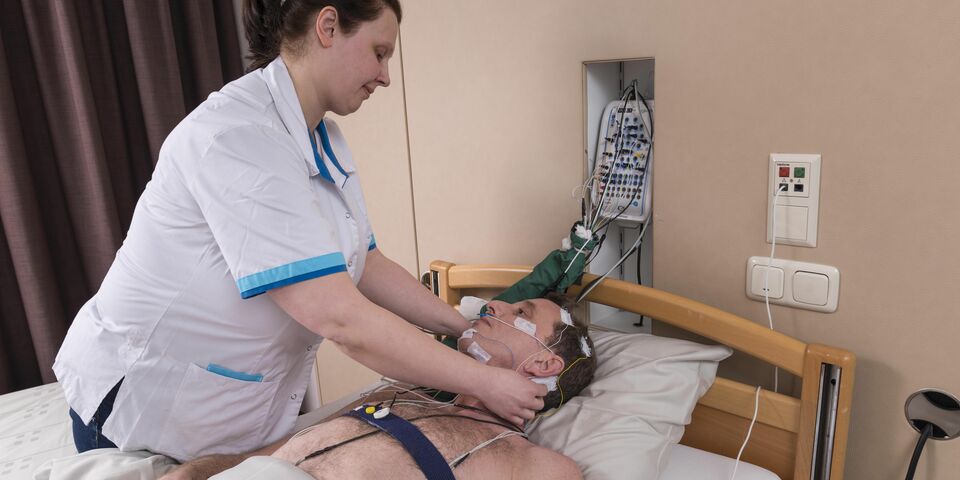New method makes the experience of sleeplessness more visible
Tomorrow is World Sleep Day, which is partly about health problems related to sleeplessness. Some people with chronic insomnia think that they do not sleep during certain periods, whereas sleep measurements show that they do. Up till now, scientists have not been able to pinpoint the exact causes of so-called ‘sleep misperception’. However, new research from TU/e and others shows that it is the period after falling asleep that determines whether or not people experience sleep.
As many as one in ten Dutch people suffer from sleeplessness. Some people with insomnia experience pronounced sleep misperception. As PhD candidate Lieke Hermans of TU/e (Electrical Engineering) explains: “Someone can feel as though they have hardly slept, while in reality they were asleep for several hours.” Her supervisor, TU/e professor and Kempenhaeghe doctor-somnologist Sebastiaan Overeem, adds: “This can give patients the feeling that they are not being taken seriously. Our research shows that sleep misperception is real and it provides more insight into the underlying mechanism.”
New method for sleep interpretation
Although the total sleep time may be sufficient, the researchers have now found that the stretches of sleep in the first hour and a half of the night must be much longer in order to give people suffering from sleep misperception the feeling that they are sleeping well. People with insomnia who wake up within half an hour after falling asleep do not feel like they have slept. Conversely, good sleepers only need ten minutes of continuous sleep to be aware of their sleep. “Our model shows that people with misperception issues do not really sleep differently, but rather experience sleep differently,” says Hermans.
According to the researchers, the current method of interpreting sleep needs to be updated. An important yardstick for sleep doctors is the time it takes for a patient to fall asleep. To find this, they make an electroencephalogram (EEG) using electrodes that measure brain activity. Overeem: “In sleep medicine, it has been agreed that a patient has fallen asleep when the first signs of sleep have become visible on the EEG. However, the process of falling asleep is not yet complete; we can now demonstrate that the duration and structure of that first sleep is also of diagnostic value.”
Perception of the moment of falling asleep
Hermans began her research with the following question: ‘For how long do you have to sleep continuously in order to be aware that you have slept?’. She focused her research on people around the age of sixty and studied the EEG measurements of 20 test subjects with insomnia and 21 good sleepers. All subjects indicated, after one night’s sleep, how long they thought that they were awake the night before. “I then developed a model in which I investigated the influence of waking up during the first part of the night on the perception of the moment of falling asleep,” explains Hermans.
The researchers will test the developed model in a follow-up study which will involve 160 people of different ages who spent the night at the Kempenhaeghe Center for Sleep Medicine. This larger study should show, among other things, whether there is a difference between the elderly and the young and to what extent sleep misperception varies between people with insomnia.
This research is part of the Eindhoven MedTech Innovation Center (e/MTIC), a partnership between Catharina Ziekenhuis, Maxima Medisch Centrum, Kempenhaeghe Center for Epileptology and Sleep Medicine, Philips and TU/e.


Discussion